Text
Top 5 museum weirdness
Received any weird requests recently? Here are some of my favourites from the 1970s received by the National Museum of Victoria and documented in the Museums Victoria Archives.
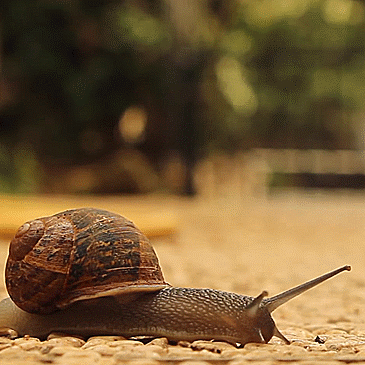
No. 5
“The Invertebrate Department received a call from a person who wanted to know how he could make his snail “go faster” - prior to the commencement of a snail race!”
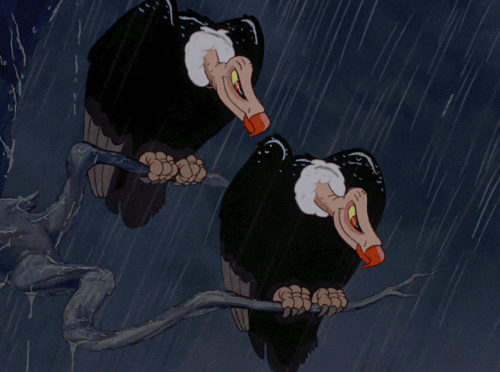
No. 4
“Lorene Reid in Ornithology received a weird request. A woman phoned and said “do you have a stuffed vulture?” Lorene said “no, I am sorry we do not have one”. The woman then said, “What a pity, I wanted one for a birthday present!”
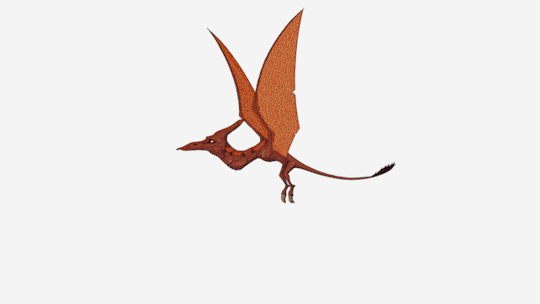
No. 3
The museum received a letter: “Would like to say I am utterly impressed with the new improvements to the museum. I think it is much cleaner and much easier to follow. The observatory cases are made with a much better design. But ever since I was six, four years ago, I have envied the Pterodactyl (prehistoric bird) on the roof of the hall at the main entrance. And seeing you are re-doing a lot of the museum if you ever have to get rid of the bird would you put me first on the list.”
No. 2
A weird donation offer via a letter: “My grandparents found or were given this yabbie (or whatever) by a driller in Central Australia. I don’t know where or at what depth. Anyway, they cherished this greatly and gave it to me. I’m afraid I value it very little, but have scruples about throwing it away. I thought I might overcome these feelings if I gave it to you and let you throw it away instead. Then I can tell them that I’ve given it to the Museum. They would be pleased! ... Sorry for passing the buck, but I’m sure they’ll like the explanation for its absence from this household. Thank you.”
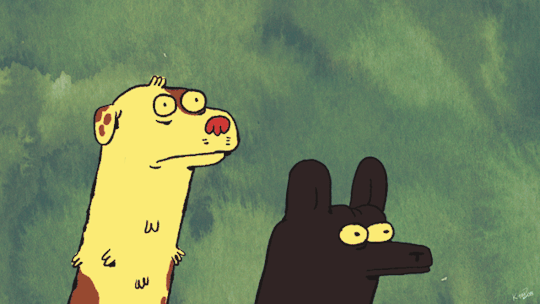
No.1
“A woman phoned the office for someone to bark like a dog. Kevin Bent was appointed “Official” dog-barker on this occasion. The woman wanted the Museum to verify that her brown Magpie barked. But the secret was that the magpie had to hear a barking sound first. So what else could Kevin do to help the public? He made several attempts to get it just right... Grr... Grr-rrr... Ruff... Grrr... and then finally a barking sound came back at him through the phone (presumably from the magpie). The woman was happy.”
2 notes
·
View notes
Text
Legacy
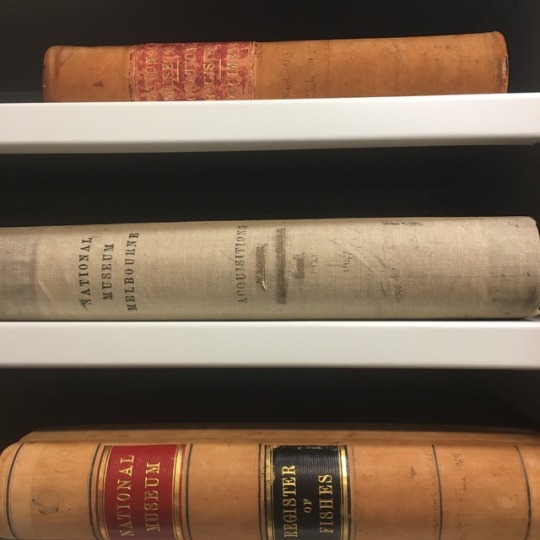
National Museum of Victoria registers / Souce: Museums Victoria / Photographer: Nik McGrath
It’s the end of another year. Do you look back and think, how did I get here? How did the year flash by so fast?
Managing a collection, time is swift, but it feels like the end is never in sight. Work to appraise, register, track and fully understand and interpret a collection is endless. When you look back at what you’ve achieved over the past year, it’s important to acknowledge small wins. Each win adds up over time, feeding into the bigger picture of what you have planned for the collection.
Curators, collection managers and archivists often dedicate their career to managing one collection, and they are in a long line of predecessors who have done the same. How does each collection manager have a sense that their contribution is felt in the legacy of work that is involved in managing the collection? Perhaps it is that they take the collection policy in a new direction. Perhaps they make the collection more visible via social media. Perhaps they attract researchers to interpret the collection in new ways.
Access to the collection by people from all age groups, backgrounds, disciplines, academics and non-academics, and community, opens the collection up to interpretation and appropriation. This work is endless, and I would argue, the reason why archivists work tirelessly to preserve, describe, store and provide access to archives.
Planning and prioritising work annually gives you an opportunity to document the progress of your work. Although it often feels like the end is never in sight, and what you want to achieve is far away, with each small win, your endless task of managing the collection is hopefully on the right track.
#glamblogclub#archivist#glam#glam geekery#museum archivist#newcardigan#archives#glam blog club#museum#ausglamblog#legacy#end#endless#collection management#shelfie
1 note
·
View note
Text
The birth of a horror fan
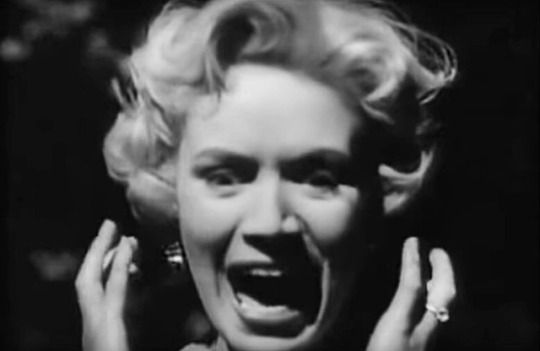
Still of Veronica Hurst as Kitty Murray in The Maze, 1953
I’ve watched 36 horror films in 26 days! For those that know me, this is a lot. For the first time I’m taking party in 31 days of horror. It’s not over yet, I have more horror films to see before the end of October. Viewing this many horror films in less than a month is a record for me!
I never thought I would call myself a horror fan. In the past I would occasionally watch horror films, usually hiding under blankets or peaking through fingers.
Why do some horror films scare me more than others? Is it imagination, sensitivity, suggestibility, tension, violence?
I’ve approached 31 days of horror with a clear plan to watch horror films released between 1900 and 1959. The films I’ve watched are rare, classics, beautifully crafted stories, and the images stay with you.
I’ve noted some interesting recurring themes and plot devices such as newspaper headlines; supposedly dead bodies sitting upright in the morgue; religious figures fighting evil; ‘What a strange man’ is often said; scientists meddling with nature features; cats hissing as a warning (take heed!); Scotland Yard is useless in dark times.
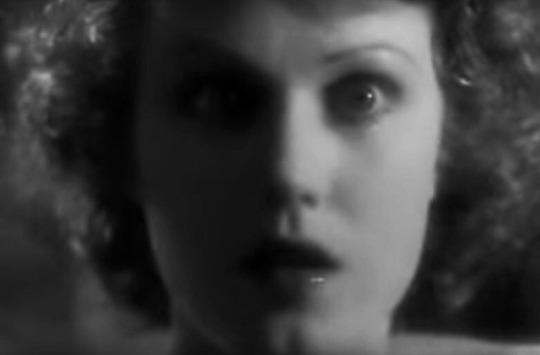
Still of Fay Wray as Eve Trowbridge in The Most Dangerous Game, 1932
I’m now a fan of the original Scream Queen, Fay Wray. She adds depth and sensitivity to the damsel in distress leading lady. She often finds courage and strength in her characters. If you’re not familiar with Wray’s work, check out: Doctor X, dir. Michael Curtiz, 1932; The Most Dangerous Game, dir. Irving Pichel and Ernest B. Schoedsack, 1932; and The Evil Mind / The Clarvoyant, dir. Maurice Elvey, 1935.
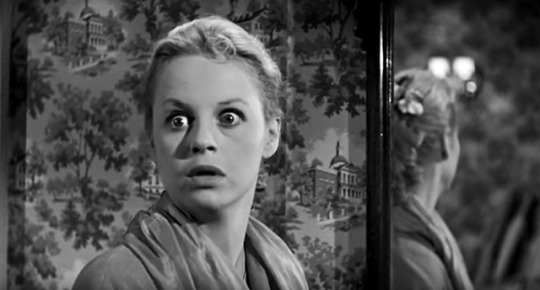
Still of Norma Eberhardt as Rachel Mayberry in the Return of Dracula, 1958
Female empowerment has been a theme I’ve relished. Women taking control, showing courage and ingenuity in films like: Cry of the Werewolf, dir. Henry Levin, 1944; She-Wolf of London, dir. Jean Yarbrough, 1946; The Return of the Vampire, dir. Lew Landers, 1943; The Return of Dracula, dir. Paul Landres, 1958; Island of Doomed Men, dir. Charles Barton, 1940; The Maze, dir. William Cameron Menzies, 1953; Phantom of the Opera, dir. Arthur Lubin, 1943.
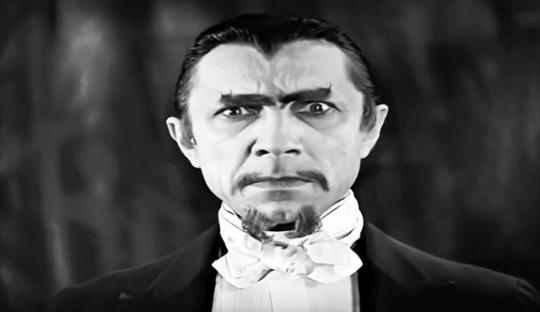
Still of Bella Lugosi as "Murder" Legendre in the White Zombie, 1932
I’m becoming familiar with the work of some of the greatest actors of the genre. I’ve seen lots of Bella Lugosi films: Dracula, dir. Tod Browning, 1931; White Zombie, dir. Victor Halperin, 1932; Son of Frankenstein, dir. Rowland V. Lee, 1939; Black Friday, dir. Arthur Lubin, 1940; The Wolf Man, dir. George Wagner, 1941; The Return of the Vampire, dir. Lew Landers, 1943. Boris Karloff co-starred in many films with Lugosi, but was a star in his own right. I’ve seen more Karloff films: The Mummy, dir. Karl Freund, 1932; The Ghoul, Dir. T. Hayes Hunter, 1933; The Black Room, dir. Roy William Neill, 1935; Son of Frankenstein, dir. Rowland V. Lee, 1939; Black Friday, dir. Arthur Lubin, 1940; The Devil Commands, dir. Edward Dmyryk, 1941.
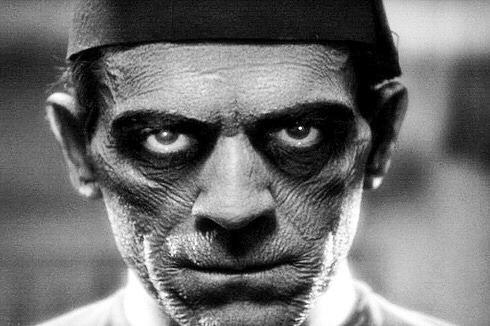
Still of Boris Karloff as Ardeth Bay / Imhotep / The Mummy in The Mummy, 1932
With only a few days left of October, I’m already planning the films I might watch next October. 31 days of Australian horror films? I’m not sure yet, but I will certainly have fun when I get there. Beginning something, challenging myself, learning, enjoying the adrenaline of being scared, laughing and sharing these films with others, I’ve enjoyed discovering some truly incredible films.
Beginning is the theme for newCardigan’s GLAM Blog Club this month.
#glamblogclub#glam#ausglamblog#archivist#museum archivist#glam blog club#newcardigan#glam geekery#horror#horror films#classics#31 days of horror#halloween
5 notes
·
View notes
Text
Always collecting
Fond memories of standing on my tippy toes to see into the kitchen sink. Dad had created a bath for the stamps still stuck to their envelopes. Dry tea towels across the kitchen bench with wet stamps drying, the sunlight coming in from the window. Sorting the stamps into sub collections and using the tweezers to delicately place them in my purpose made stamp album. Flicking through the pages of my growing collection.
A childhood spent collecting - stamps, marbles, stickers, Trolls - carefully caring for, seeking out new additions, the thrill when a rare item is acquired with saved pocket money, countless hours spent grouping items, and storing away safely for the next time I take them out to admire.

Listing accession registers to track in the EDRMS in situ in the Entomology Collection Store, Melbourne Museum, 2017 / Photographer: Nik McGrath
Appraisal is one of the most thrilling parts of my job as an archivist. Making significant discoveries amongst an archive, filling historical gaps in a transfer from one department within the museum into the archives - developing the collection is vital to ensure that the memory of all museum activities are preserved. All of the voices are heard equally and impartially.
To develop the museum’s archive collection I must understand all aspects of my colleagues work, and make sure that they understand the significance of preserving their permanent records for the archives, for now and into the future. I must also identify permanent records stored throughout the organisation in office spaces, collection stores and offsite storage. The legacy of work spanning over a century by hundreds of museum workers. This is an endless task and requires constant diligence.

You’ll float too... into the archives forever.... IT IMAX poster transferred to Museums Victoria Archives, Melbourne Museum, 2017 / Photographer: Nik McGrath
Museum directors and curators have loud voices in museum archives, but I am determined to ensure that the work of preparators, live exhibits, conservation, marketing, outreach programs, customer service, education programs, exhibitions, IMAX, Planetarium, museum retail, photography, design, library, public information, science, digital life, First Peoples and all the versatile array of work that makes the museum tick is documented for historians and researchers of the future.
So I talk to my colleagues, I talk a lot, and I raise the profile of the archives on social media so that museum workers remember to transfer their permanent records to the archives. These archives don’t belong to individuals, but to the public and they must be made centrally available.

What a fabulous bow tie collection! Rehousing photographs of community collections from 2004 which were recently transferred to Museums Victoria Archives, 2018 / Photographer: Nik McGrath
So what types of records would you find in a museum archive? I would recommend browsing the Museum and Gallery Functions Retention and Disposal Authority (RDA) on the Public Record Office Victoria (PROV) website.
This is a guideline for museum and gallery archivists, however discretion must be taken by the archivist about what records are deemed historically significant and worthy of preservation, even if this is contrary to the retention period stated in the RDA. The RDA sets down minimum retention periods for government records, however archivists must draw on their knowledge of an organisation to make sentencing decisions - to retain records permanently or dispose records as per the RDA.
Collecting for a museum archive is also about capturing metadata and tracking permanent records in situ, outside the archives repository. It is about collecting information to enhance what we know about items within the collection. Collecting is about making information available more broadly and reinterpreting items from the past. Collecting is about preserving significant records produced today as well as 100 years ago. Collecting is about written records as well as audio (e.g. soundscapes for exhibition and oral histories); as we all photographic (e.g. staff Christmas parties and museums programs); and audiovisual (e.g. field trips and community festivals).
The voice of the archivist can be heard in collecting decisions made. The little girl who once painstakingly collected stamps with her Dad, I wonder what collecting legacy she will leave behind...
1 note
·
View note
Text
Digital museum
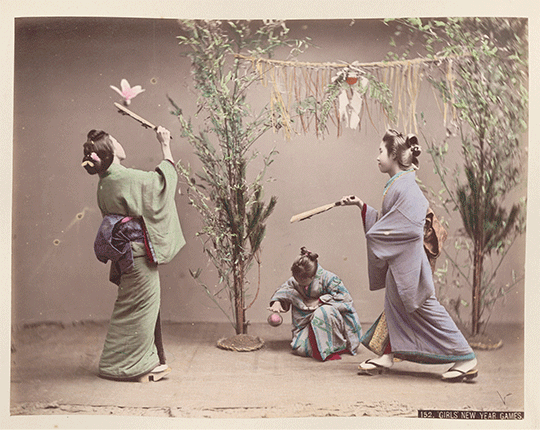
What direction will the digital age take museums?
Digital preservation is a vital tool in the management of museum collections. Digitised and born digital collections are increasingly made accessible online to local and international researchers and communities.
The preservation of artefacts and specimens digitally does not make the artefact or specimen obsolete, but provides a digital copy or surrogate, an insurance policy if the item is lost or deteriorates over time. Digitised collection items also provides the means to exchange knowledge about collection items between experts in different collection institutions without necessarily viewing the physical item.
Gemma Steele, librarian at Museums Victoria, recently wrote an article about the Rare Book Collection at Museums Victoria for the Australian Society of Archivists VIC Branch June newsletter. Museums Victoria Library has “the only copy of Albertus Seba’s Locupletissimi rerum naturalium thesauri accurata descriptio (1734-65) held in Australian libraries.
One of the volumes has been digitised and is available via the Biodiversity Heritage Library (BHL). Other institutions, such as the Smithsonian, have added their own digital copies, which has allowed us to compare hand-colouring and binding. The opposum’s teal nails, which we originally thought to have been a flight of fancy on behalf of the colourist, are in fact consistent across the coloured copies available in BHL.”
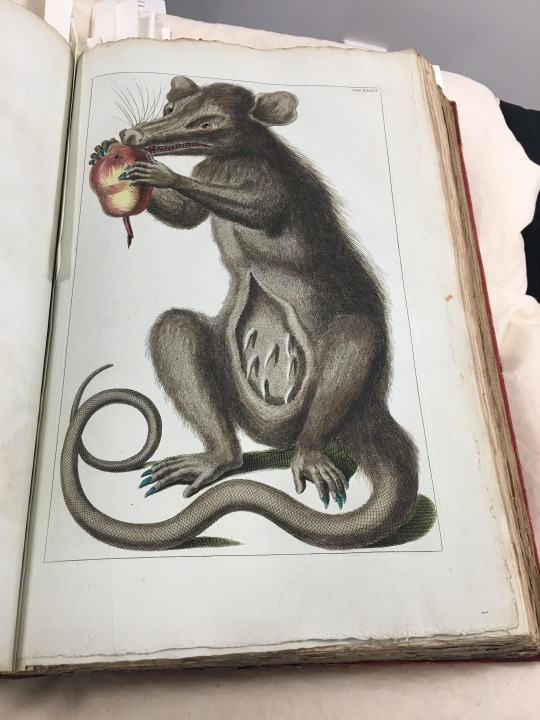
Albertus Seba’s Locupletissimi rerum naturalium thesauri accurata descriptio (1734-65) / Photographer: Nik McGrath / Source: Museums Victoria Library
Digital experiences physically in museums and virtually on museum websites and apps, provide alternative ways of interpreting collections, accessing museum expertise and knowledge, as well as new ways of thinking about collections, programs and exhibitions.
“Preservation is commonly perceived to be the responsibility of large, well-resourced institutions such as national libraries and archives, state libraries, and university and research libraries. This perception is no longer valid in the digital age. It may have been a legitimate view in the days when expensive conservation laboratories were considered necessary for a successful preservation program and when computer installations were few in number, but the current reality is very different. Digital materials are now being created at a rapid rate by many different kinds of communities. Responsibility for their preservation must be shared among diverse creators and users of digital information, and cannot remain solely the concern of librarians, archivists, and specialists with skills in digital preservation” – Ross Harvey and Jaye Weatherburn, Preserving Digital Materials, Third Edition, 2018.
Museums Victoria’s Strategic Plan 2017 to 2025, in Lynley Marshall’s CEO message, the following statement is made: “We will create digital experiences that deliver Museums Victoria’s stories, research, collections and content far beyond our walls to the world at large. As a leading centre for technological and scientific excellence, we will foster innovation and enterprise in Victoria”.
Digital is one of the three transformational themes in the Strategic Plan: “Develop a Digital Life for Museums Victoria that takes the wonder and inspiration of our collections, knowledge and expertise beyond our walls through audience-centred experiences that connect with hearts and minds.”
Digital preservation isn’t the answer for all preservation and access issues, however innovative ways of using digital in the GLAM sector is the direction we’re moving and who knows what the future holds...
#glam#glamblogclub#ausglamblog#archives#archivist#museum archivist#newcardigan#glam geekery#glam blog club#museum#museum collections#digital preservation#digital#preservation#rare books#digitisation#born digital
5 notes
·
View notes
Text
Create, the passion
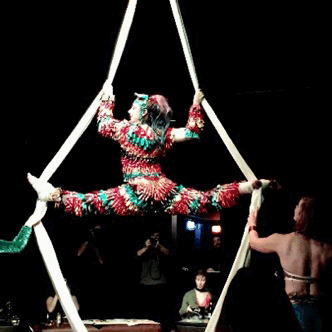
Gif from a video I shot of KillJoy performing at Dr Sketchy’s at 24 Moons, 14 September 2017 © Nik McGrath
I’m passionate about my job and the GLAM sector. GLAM isn’t my one and only passion. A benefit of having many alternative passions is they help sustain my passion for GLAM.
I feel passionately about the importance of GLAM workers having interests outside the world of GLAM. I believe we keep our passions alive at work, and within the GLAM community, by having passions outside work.
Passions outside of GLAM may fuel our discovery, innovation, ideas and inspiration at work. Ideas and ways of doing things in other areas may help resolve challenges we are facing at work.
I use a lot of emotional energy in my work. Self care is important. Drawing is one of the only times I really let go of the thoughts constantly rattling away in my mind. Drawing is my main form of self expression and relaxation.
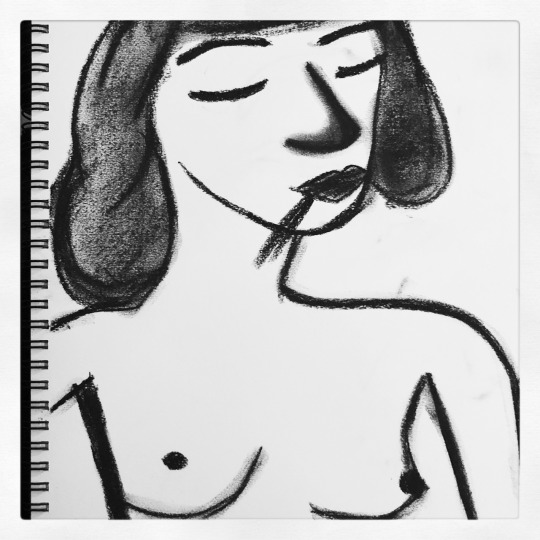
My sketch of a model performing to the theme Vampyros Lesbos at Gay Life Drawing at Hares & Hyenas, 13 March 2018 © Nik McGrath
I enjoy all forms of art - performance, music, visual art, film, dance, photography... I often think that one day, when I retire, I will have a full life because of all of these passions that I have to sustain me. That comforts me.
Passion was the theme for GLAM Blog Club in May. Create is the theme for June. One blog, two themes.
1 note
·
View note
Text
Democratisation in action
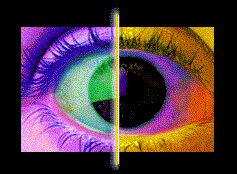
There is no political power without control of the archive, if not of memory. Effective democratisation can always be measured by this criterion: the participation in and the access to the archive, its constitution and its interpretation. - Jacques Derrida, Archive Fever, 1995
Control is vital in the world of GLAM. If control is lost, items are not registered in databases making them untrackable and unused. Library books never find their reader, knowledge in archives untapped, gallery collections locked away in stores never to be displayed, and museum objects go unnoticed and unstudied.
Museums Victoria has 17 million objects - can you imagine if museum workers lost total control, these objects and specimens are rendered meaningless without the metadata and systems that track them.
The Commonwealth Record Series (CRS) System is the archival control system the National Archives of Australia has used since the early 1960s to classify and control Commonwealth records. In the CRS Manual, the word control is used 61 times. Clearly control is important to archivists.
Although it’s important that archivists maintain control of the systems that ensure items are trackable and findable, it is also important that archivists enable access. Raising the profile of archival collections and awareness of the content available within collections provides more opportunities for individuals from diverse backgrounds to interpret archival material in new and interesting ways. This is democratisation in action.
Gone are the days of archivists acting as gatekeepers to these valuable collections. Archivists are the catalysts in this open access movement.
Communities are also demanding greater access to museum collections, both on display and back of house. Social media has played an important role in providing digital access to collections, and insights into the work of GLAM professionals and what goes on behind the scenes. Some GLAM institutions have embraced this new-found openness to their operations wholeheartedly.
One of my favourite examples of this is Tate’s Archives and Access project (2012 - 2017), made possible through a £1.9 million grant from the Heritage Lottery Fund. At the completion of this five-year project, 52,000 items from the Tate Archive have been digitised and published online. “The project also produced a suite of digital tools and resources that support discovery of the digitised collections. These include: the Albums feature, which allows users to collate and share collection pieces published on our website; Animating the Archives film series, which explores artists and themes inherent in the collections, and; AnnoTate, an online crowdsourcing transcription tool that invites audiences to transcribe text from the collections.” - http://www.tate.org.uk/about-us/projects/transforming-tate-britain-archives-access
Funding projects such as Tate’s Archives and Access project is vital if we are to follow Derrida’s philosophy about providing access to archives as a means of ‘effective democratisation’. Publishing digitised archive material and new content online, interpreting archive material in new ways, such as in Tate’s excellent Animating the Archives film series, allows anyone with access to the Internet to use this archive material that was once studied by the privileged few. This is democratisation in action.
This is just one example to illustrate my point, however I am excited and optimistic about the future of archives because of all the other excellent examples of archivists using control systems to make items findable, and sharing collections online, on websites and social media, so that diverse communities have greater access.
youtube
#GLAM Blog Club#glam#glamblogclub#GLAM geekery#AusGLAMBlog#archivist#control#digitisation#Tate Archive#access#democratisation
1 note
·
View note
Text
Secret about a secret
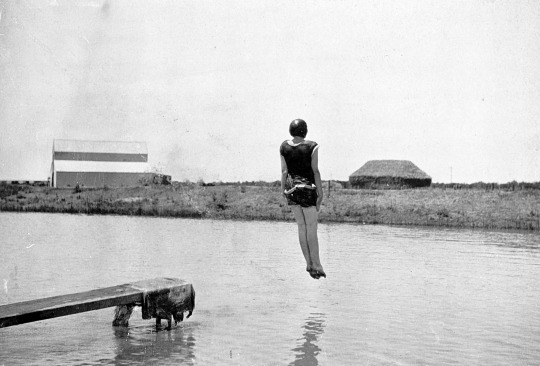
A young girl jumping, feet first, into a dam, Mildura district, 1924 / Photographer unknown / Source: Museums Victoria, Item MM 5035
“A photograph is a secret about a secret. The more it tells you the less you know.” – Diane Arbus
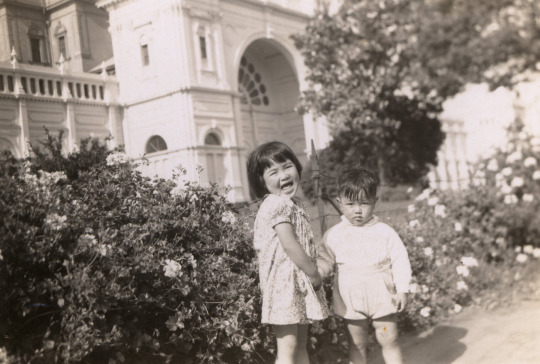
Phyllis and Jeffrey Louey Gung outside the Royal Exhibition Building, Carlton Gardens, Melbourne, circa 1948 / Photographer unknown / Source: Museums Victoria, Item MM 136700
Photographs of people are a source of happiness for me. The more I look into a photograph and think, why was the photograph taken, was the subject exploited or misrepresented, my initial happiness can go two ways. I can either become obsessed about finding out more about the subjects and context of the photograph; or I can simply enjoy the photograph for the aesthetics and intrigue it provides.
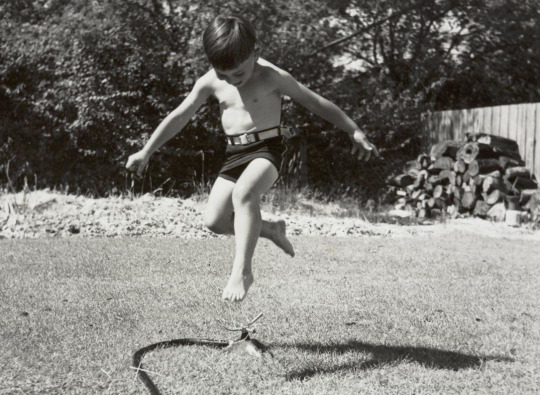
Gerald Brocklesby jumping over the sprinkler in the back garden of his family home at Blackburn, 17 January 1953 / Photographer: Mark Linacre Brocklesby / Source: Museums Victoria, Item MM 110316
With more photographic collections digitised and made accessible online, more than any other time in history we have access to these remarkable photographs from collections all around the world. This also makes me very happy.
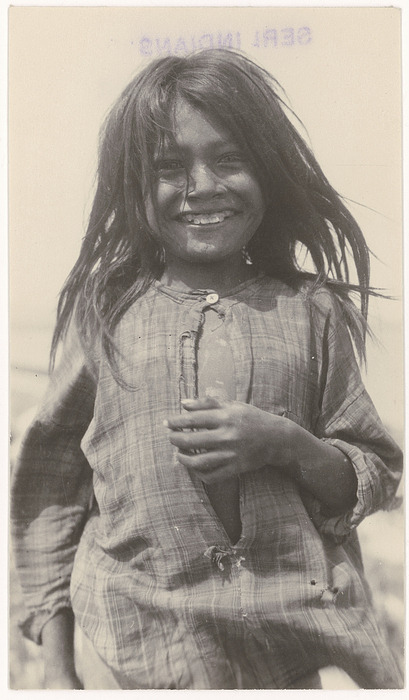
Outdoor portrait of a smiling girl, Isla Tiburón, Mexico, 1924 / Photographer: Edward H. Davis / Source: National Museum of the American Indian, P06267
This month’s newCardigan GLAM Blog Club theme is happiness. Photographs sometimes capture the happiness of the subject. Is it true happiness captured? Often when a camera is pointed at a subject, the subject will automatically smile or laugh for the photographer. Are they happy to have their photograph taken, embarrassed or conditioned to smile for a photograph? Is happiness contrived?
#glamblogclub#GLAM Blog Club#glam#AusGLAMBlog#archivist#photographic collections#photographs#portraits#museum collections#happiness
2 notes
·
View notes
Text
Private moments
Voyeurism is part of the job. Reading correspondence, private diary entries, works in progress.... I watch private moments in the archives. I wonder if the author of these private moments considers when writing that these moments are in fact not private. They belong to the organisation they work for, and will be studied in years to come. If the author is aware, does this alter their mode of expression? In the Museums Victoria Archives, correspondence between experts working in the same field but different countries, over many years, the lines are blurred between professional exchanges and the personal friendships that form. Family holiday postcards are exchanged, and filed dutifully along with correspondence on museum letterhead. The sense of watching is felt keenly.
Museum experts receive letters from interested members of the public, all kinds of enquiries that are each dutifully responded to in turn. As the Museum has grown, so has the number of enquiries. Now a unit in the museum fields these enquiries and logs them in a central database. No enquiry is ever allowed to fall between the cracks. A great deal of work goes into providing access to information, collections, experts and answers. In 1988 a 9 year old girl wrote to the Museum of Victoria about her stamp collection, her interest in stamps, and declared that “... collecting stamps is one of my best hobbies”. The girl also asked for information on collecting stamps and asked if the Museum could send her some. Such a tender and heartfelt moment, which could have been easily crushed if the girl received no response from the Museum, or received a short and sharp response. Thankfully John Sharples, Curator of Numismatics, did not disappoint. In fact, Sharples letters never disappointed, he always gave kind and informative responses to all his correspondents.
Sharples replied: “Thank you for your letter about your stamp collection. Unfortunately the Museum has no printed information on stamp collecting that I can send to you. We have only a small stamp collection from the period when stamps were first used in Australia”.
Although Sharples was unable to provide information about stamp collecting, and could not send the girl any stamps, he was still encouraging: “May I suggest that you visit your local library and ask the librarian to show you where the books on stamps are kept”.
If I was the girl who received this letter, I’m sure my love of stamp collecting would have been inflamed by such encouragement. Sharples final encouragement: “Stamp collecting is indeed a good hobby and I hope that you continue to enjoy it for many years”.
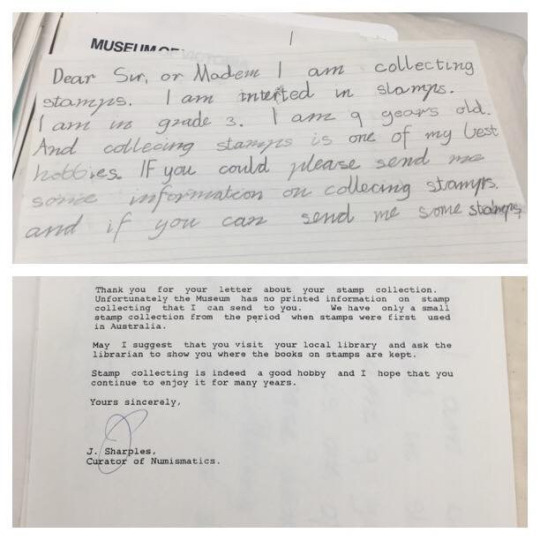
Above cropped image of letter from unidentified girl addressed to the Museum of Victoria, and below reply from John Sharples, Curator of Numismatics, 1988 / Photographer: Nik McGrath / Source: Museums Victoria Archives
This is just one example in a sea of private moments contained in the Museums Victoria Archives. I feel privileged to witness these moments. These letters feel fresh, indeed 1988 is recent history. In fact I was 7 turning 8 years old myself in 1988. This letter could easily have been written by me. I too had a stamp collection which was one of my prized possessions.
I have protected the identity of the girl in sharing this letter online. I wonder if she might see this blog and remember writing the letter.
Private moments are recent, and also distant memory. Letters written over 100 years ago, the ink bleeding into the soft tissue paper, paper folds cutting into the fragile paper, bring to life moments that feel like they happened yesterday.
‘Watch’ is our theme for newCardigan’s February GLAM Blog Club. I never realised how much watching and voyeurism is an essential part of my job.
#glamblogclub#GLAM Blog Club#glam#GLAM geekery#AusGLAMBlog#archivist#museum archivist#Museums Victoria Archives#Museums Victoria#correspondence#archives#watch
4 notes
·
View notes
Text
“In a dark place we find ourselves, and a little more knowledge lights our way” – Yoda

I hope to find light in what I will learn this year during a time of darkness in our history. We have reason to hope, although that is sometimes hard to see when we consider the hopelessness our world faces due to power being given to the corrupt and stupid.
How can I make the world a better place? By learning to be a better person, learning from my friends and colleagues, and by sharing what I learn.
What do I hope to learn this year? This is a question I ask myself every year. This year I’m sharing what I want to learn in 2018 with you, dear reader, my fellow GLAM Blog Club peeps.
Emerging technologies and future trends of the GLAM sector
What is emerging in the GLAM (galleries, libraries, archives and museums) sector? New technologies? Future trends?
Oral history
It would be my wish to learn the skills of an oral historian, and to find a mentor who is willing to take me under their wing. Oral histories are vital in capturing social contexts and knowledge otherwise not recorded in any other digital or physical records. Audio heritage is an interesting emerging field of study. I am also interested in the art of listening and asking questions leading to faciliate sharing of knowledge and stories. I feel I have an important contribution to make to the archives.
Podcasting
Technology often confounds me, as does the technical elements of podcasting. Justine and Clare are highly skilled in producing cardiCast, which is an important means for newCardigan to reach a broader audience, to include people in our community in the virtual space. Recording, editing and publishing, and any other areas of podcasting, will be a focus for me this year.
Blogging
I blog, but do I blog to the best of my ability? Could I blog in a more readable style? How could I improve my blogs?
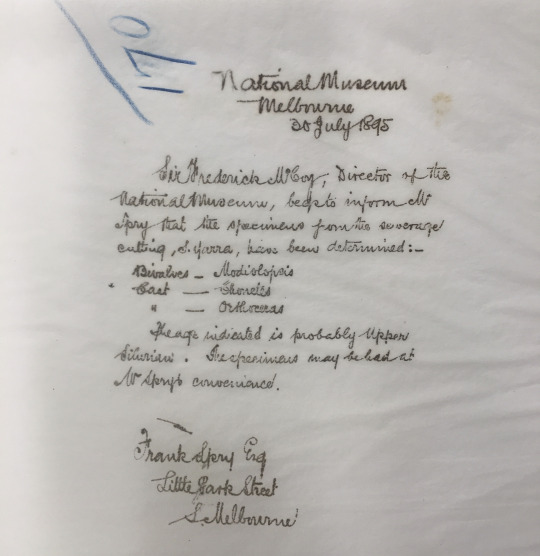
Letter written to entomologist Frank Spry (later staff member at the Museum) on behalf of Prof Frederick McCoy, Director, National Museum of Victoria, 30 July 1895 / Photograph: Nik McGrath / Source: Museums Victoria Archives
Deciphering historical handwriting
I often wish that I was born a century ago. I wish I had century-old skills in deciphering handwriting. Older generations may laugh at me, however they have an edge when it comes to reading historical handwriting. I find the more handwritten correspondence I read, the better my skills at comprehending difficult hands. I would like to take a more structured path to learning historical handwriting. Perhaps I need a tutor?!
Conservation of paper, audiovisual and photograph collections
My interest in conservation is important to my job, but it stems from my love of tangible heritage and the tactile nature of preserving and conserving collections. On the job training from the Conservation Department at the Museum is something that must be kept current to remain current with latest theory and techniques in the sector, ever developing and changing. The Grimwade Centre for Cultural Materials Conservation has a fantastic YouTube channel with useful how to videos. This is an area I am constantly working on, to improve and to learn from experts.
Museums Victoria organisational knowledge
Working for a large organisation such as Museums Victoria, with a vast history spanning 164 years, my goal each year, as Archivist at the Museum, is to gain organisational knowledge. I learn a lot about the Museum from answering research enquiries and reading material in the Archives, but I also take a strategic approach. I attend as many internal seminars and other Museum events as possible, explore all exhibitions, and read articles about museum objects in the collection on our Museums Victoria Collections website. I read blogs written by Museum staff, talk with colleagues about their work, research interests and read Museum staff publications. I read publications produced by external researchers enhancing what we know about our collections, past staff members and historical events of the Museum. I keep seeking and searching for more learnings about the Museum, each day I learn something new.
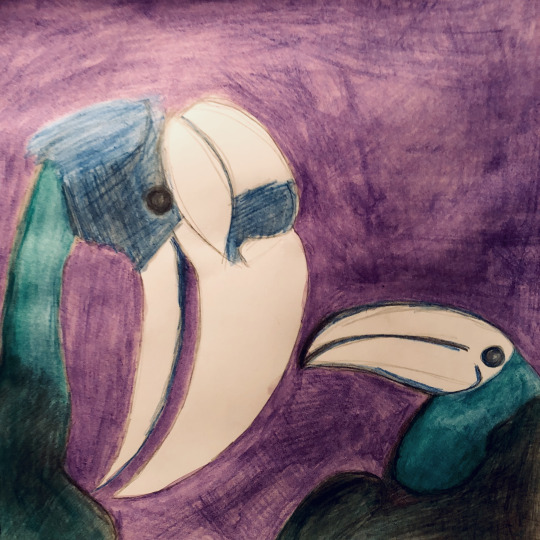
Great Hornbill and Southern Ground-Hornbill sketched from specimens on display at the Inside Out exhibition, Melbourne Museum, 17 January 2018 / Artwork and photograph by Nik McGrath
Watercolour
Not sure why, but for a very long time I have been intimidated by the idea of watercolour. I love watercolours created by my heroes, artists such as Norman Lindsay, William Blake and my best friend Lily McDonnell.
I recently went to a Creative Art Studio at Melbourne Museum in the Inside Out exhibition, run by artist Belinda Wiltshire. Belinda taught me to experiment with my art materials and techniques, including watercolour. To take more risks in 2018 with my art is my ultimate goal, and to develop my watercolour technique.
My sister and I have started ‘Watercolour Mondays’, as we both want to learn watercolour and by doing it every Monday we will motivate each other to keep trying, experimenting and learning this exquisite form of art.
I hope to gather knowledge and techniques from my artist friends, Lily above all, from YouTube videos of watercolour masters sharing their techniques and style, and any tips I can pick up along the way.
Memory
My short-term memory is shocking. I would like to do something about that... I’ve read that the memory can be trained. I would like to learn how to train my memory to better retain information, especially names, places and dates.
If I don’t achieve all my hopes and dreams for 2018 I will not be dejected, but determined to keep on trying and learning in 2019... That’s what lifelong learning is all about...
#GLAM Blog Club#glam#glamblogclub#GLAM geekery#AusGLAMBlog#archivist#lifelong learning#learn#2018#learning#memory#watercolour#art#risk#newCardigan#cardi core#conservation#historical handwriting#knowledge#oral history#blogging#podcasting#emerging technologies#future trends#Museums Victoria#museum#Yoda#Star Wars
0 notes
Text
Wolf pack
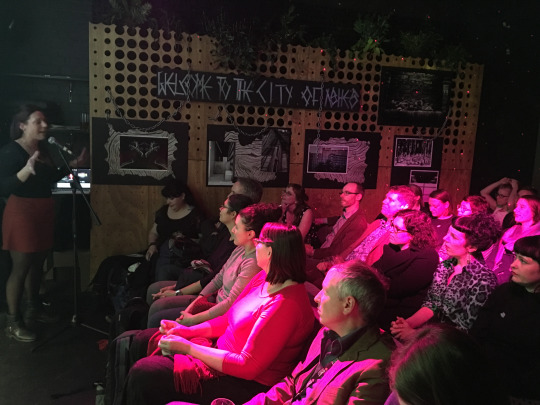
Mel Begg speaking to cardies about horror film archives, June 2017 / Photographer: Nik McGrath
“In the long history of humankind (and animal kind, too) those who learned to collaborate and improvise most effectively have prevailed” (Charles Darwin, The Origin of Species, 1859).
Collaboration is from the Latin ‘collaborare’, meaning ‘work together’. At the heart of what we do as GLAM (galleries, libraries, archives and museum) professionals is collaboration, that is if we don’t act as lone wolves, if we reach out to our colleagues in the GLAM sector. My wolf pack are my friends and colleagues in the GLAM world. I also have a wolf pack in the art world, and a recent wolf pack in the Melbourne Horror Film Society (MHFS).
Sometimes these wolf packs cross over, and my fellow wolves that belong to more than one of my wolf packs are truly special people in my life who I can collaborate across areas of interest. Mel Begg and I studied Information Management at RMIT together, drawn together as fellow archivists interested in film, audiovisual and photographic archives. Mel is one of the organisers of the MHFS, introducing me to the group. Earlier this year I asked Mel to talk about horror film archives at our June cardi party. I love when worlds collide.
In recent years there has been increased cross-disciplinary collaboration between the GLAM sector. If lone wolves were how we operated in the past, current practice encourages collaboration to add value to our profession and the community we serve.
“Now in the digital world, collaboration is central, contributions are encouraged (blogs, tweets, share photos and videos, post content to Facebook, and so forth), and people recognise that sharing adds value for everyone” (Joseph R Matthews, Adding Value to Libraries, Archives, and Museums: Harnessing the Force That Drives Your Organization’s Future, 2016, p. 215). When you post a blog, you are contributing your thoughts to a larger discussion online. That’s what GLAM Blog Club is all about. I think collaboration is an apt theme to close the year, and something newCardigan supports in everything we do.
Collaboration has been important to me as long as I can remember. I think for me it really started in art class at school. To create my photographs for my year 11 and 12 folio, I collaborated with life models. I contacted the local life model society, hired a model to come to my house, spoke to the model about my ideas and we discussed the best way to execute them.
Returning to uni to study Information Management, I was blown away with the level of collaboration amongst the student cohort. During our studies a couple of the students created a Facebook group for us, Li-BRO-rians, although I’m an archivist and not a librarian, I was still a welcome member of the group. We discussed uni assignments, shared ideas and worked together to navigate the course the best we could. When we began to apply for jobs, the support of this group was crucial to everyone’s success, and continues to be so.
When I was asked to join the cardi core (committee) of newCardigan, I would never have thought how much I crave collaboration. Collaboration with the cardi core, GLAM speakers and our cardies (members) is central to the success of our cardi parties, cardiCast (podcast) and GLAM Blog Club. Collaborating, cross-pollination between different personality types, experiences, skill sets and professions in the GLAM sector is essential to improve and implement our ideas. JFDI is newCaridgan, and collaboration is how we’ve maintained momentum.
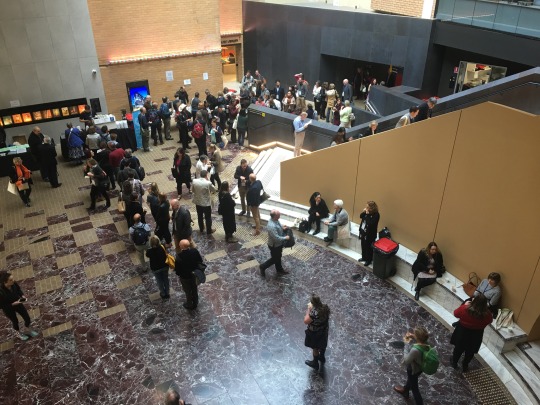
Australian Society of Archivists conference delegates, September 2017 / Photographer: Nik McGrath
I learn a great deal from collaborating with others. Projects benefit from the input of ideas from more than one source. The newsletter I produce as Comms Officer of the Australian Society of Archivists (ASA) Victorian Branch requires the collaboration of many voices to make each issue an interesting read for members of the GLAM community. I enjoy reaching out to individuals inviting them to write feature articles, and receiving articles from passionate members of the Branch who want to make a contribution.
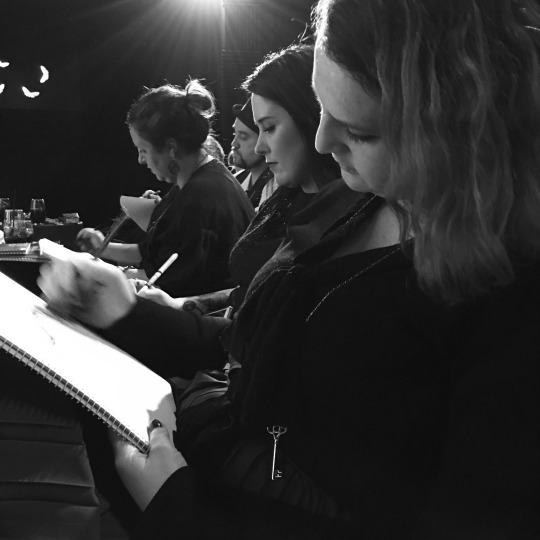
Friends drawing at Dr Sketchy’s, August 2017 / Photographer: Nik McGrath
In December 2007 I went to my first Dr Sketchy’s at the Butterfly Club in South Melbourne. Since then I have been a regular member of the Dr Sketchy’s art community in Melbourne. I have met many incredible performers and artists over the past decade. Each Dr Sketchy’s session is a collaboration between the artists in the audience and the performers on stage. It’s an important working relationship that leads to the creation of memorable experiences, sketches, videos and photographs.
In recent years I have been an active member of the Covert Characters Life Drawing group, collaborating with performers when making drawings and photographs, and feeling inspiration from the performers on stage, the feeling in the room, and my fellow artists. This inspiration and collaboration is something I also feel each time I’m with my Dr Sketchy’s art family.

Terri Berends, Mel Begg and I at a Melbourne Horror Film Society screening, December 2016 / Photographer: unknown
I think we grow stronger from collaborating with others, we learn and feel inspired. I love being surrounded by cinephiles, sharing in their passion for film. For many years I have immersed myself in the world of sic-fi and fantasy, however recently joining the Melbourne Horror Film Society, attending monthly screenings and learning more about horror films from the organisers and members of the society, I feel like I have a new-found appreciation for film as an art form. The collaboration of the organisers, and being an attendee rather than an organiser, allows me to learn from their way of doing things, their knowledge, ideas and passion, in a different way than in my role with newCardigan and the ASA VIC Branch.
As a museum worker, I collaborate with individuals across the organisation, in different departments, on various projects, and in various types of work. I work closely with colleagues in the Records and Archives unit to deliver various projects, recently we have been working on the upgrade of our EDMS. I also collaborate with members of my department which includes the library team and the public information team. Recently we collaborated with the library team to create library and archives tours. In the tours we presented correspondence between famous English ornithologist John Gould and the first Director of the Museum, Prof Frederick McCoy in the archives, and the library rare book collection of Gould publications, including Birds of Australia and Birds of New Guinea. Collaborating on the these tours meant that visitors received insights about the beautiful Gould publications from the librarians, as well as telling the story from the archives of how the Gould publications and specimens were collected over a number of years.
When the public information teams send research enquiries from a member of the public to me in the archives, the same question is often sent to another member of staff, perhaps a collection manager or curator. To answer a research question often requires information from many sources across the Museum. If only one person answered the enquiry, the full picture would not be discovered. Collaborating on research projects across disciplines and areas of expertise is something that benefits everyone, especially the person asking the question in the first place. The Museum recently received an enquiry about Frank Spry, an entomologist who worked in the Museum in the early 1900s, who collected items for the entomology, palaeontology and ethnology collections. This enquiry has led to a collaboration project between colleagues working in Entomology, Palaeontology, Indigenous Cultures and Archives, and will eventually lead to a better understanding of Frank Spry and his contribution to the Museum.
Collaboration is at the heart of what we do as GLAM workers. Archivists in the past were often described as lone wolves. Today we are part of something bigger, the GLAM community. Collaborating on projects, cross-pollination across disciplines and working with others creates learnings across the sector, better and more rounded individuals in the profession, and more fruitful and well-rounded GLAM programs, exhibitions and experiences.
#GLAM Blog Club#glamblogclub#glam#archivist#artist#museum#Museums Victoria#Melbourne Museum#newCardigan#cardiparty#cardicast#blog#Dr Sketchys#Covert Characters#art#collaboration#collaborate#photographer
2 notes
·
View notes
Text
Walking a tight-rope
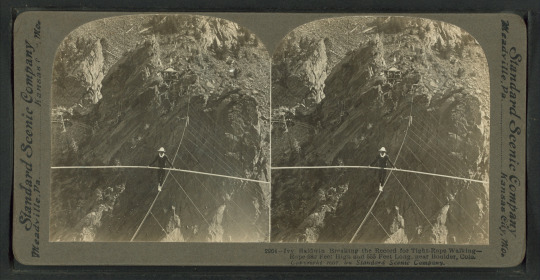
Ivy Baldwin crossing Boulder Canyon on a tightrope, 1907 / Photographer: unknown / Source: Robert N. Dennis collection of stereoscopic views, Colorado, New York Public Library
Do you ever feel like you’re walking a tight-rope? Future gazing and workplace planning are important tools to achieve goals. If a work-plan reflecting all of the important components of your role within an organisation is created and implemented, it is indeed possible to find balance between these components.
This month’s newCardigan GLAM Blog Club theme is balance. The idea is that you can interpret that word in any way you like. Instead of looking at work-life balance, or another meaning of the word balance (I did consider sustainable collecting), I have chosen to consider the balance I strive to achieve everyday in the work I do, with a sense of duty in meeting the requirements of my position.
During the interview process for my current position as archivist at Museums Victoria, I was asked to present my vision of the first 12 - 18 months in the position based on the position description supplied. When reading the position description, I saw a need for balance between the twelve objectives listed.
As all archivists do, I immediately saw a need to classify the objectives into functions, then sought to divide each week into fragments of time based on the priority I placed on each function. The twelve objectives were divided into five main functions: access; storage; collection management; governance and legislation; and finally, a volunteer and student program.
I noted that access would be given priority, as I feel strongly about promoting archival holdings to ensure increased accessibility, not only to researchers but all members of the community. The position is four days a week, and thus I divided my week into one and a half days spent responding to research and access requests; promoting archive material for publications, exhibitions, and online; developing finding aids; identifying vital records; and developing a digitisation plan.
Storage, given second priority, I assigned a day a week, including appraisal and disposal work; managing the space requirements and resources of the repository; and monitoring environmental conditions in the repository.
The last three functions I equally divided into half a day each per week. Collection management has one main objective, to work with stakeholders to manage archive holdings across collections and institutions. Collection management is a larger function including storage, facilities management, preservation and conservation requirements, ordering archive supplies, and the list goes on and on. I consider the job of archivist closely aligned to that of a collection manager.
Governance and legislation has two main objectives: to adhere to Museums Victoria’s policies and procedures; and to adhere to relevant archives legislation and regulations. This often requires the development of internal policies and procedures, and to update existing ones. It’s also important to stay up-to-date with any changes in industry legislation and regulations.
A volunteer and student program, is the last of the five functions, which includes training and supervising other workers, students or volunteers on projects in the Archives. I find all aspects of my work extremely rewarding, working with volunteers and students, helping them learn new skills and seeing them flourish, makes me feel that I am positively contributing to the GLAM community and advocating for the role of archivists in the workplace.
Some weeks I feel that I achieve a balance between these functions, and other weeks one function may take priority. However, these functions are a guide for me to revisit regularly. I often consider, am I servicing each function as I should? Am I giving priority to one function when needed? Am I finding balance between all of my functions as an archivist?
Walking the tight-rope that is my life as an archivist often requires a long view, planning projects based on the priorities of the organisation, years into the future. It is easy to get lost in the legacy that is archival work, and the volume of work ahead. However, I feel that dividing and conquering, seeking a balance in daily and weekly tasks, helps manage and find balance in all of the functions that make up the role of archivist. Walk that tight-rope, and don’t look down.
#GLAM#glamblogclub#AusGLAMBlog#archivist#museum#collection management#balance#workplan#planning#access#storage#governance#legislation#volunteers#students#mentoring#community#priorities#Museums Victoria
1 note
·
View note
Text
The Road Less Travelled Part II
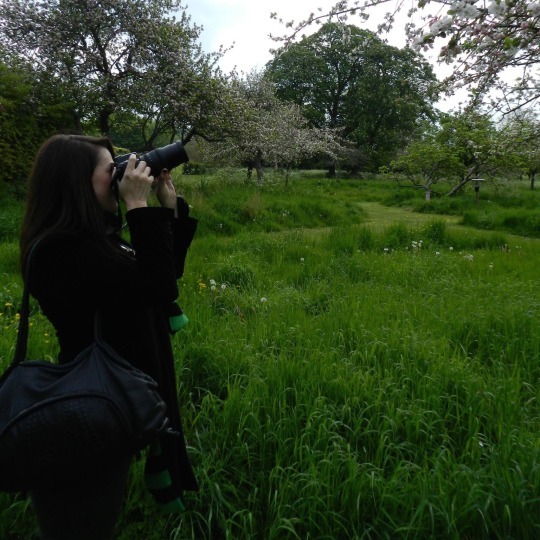
How did she end up here, like this? How could there have been so much - so many moments, so many people and things… - Everything is Illuminated, Jonathan Safran Foer
In January this year I wrote a blog The Road Less Travelled, sharing my path to becoming an archivist: https://musingsofableedingheart.tumblr.com/post/156377570259/the-road-less-travelled-like-many-people. My archivist origin story is well covered in this blog, however I would like to add some more thoughts about ‘How I ended up here’ for this month’s newCardigan GLAM Blog Club.
When I became an archivist, I found my vocation. For as long as I can remember I have been obsessed with history, photography, art, material culture and piecing together narratives based on evidence from primary sources. As a museum archivist I have access to collections that feed my obsessions, and I receive many research enquiries that requires the piecing together of narratives based on archival evidence.
An example of piecing a narrative together is my research about the scientist Fay Murray. In December last year I received a public enquiry via the Discovery Centre at Melbourne Museum about Fay Murray from her nephew Reg Murray. Reg contacted the Discovery Centre about his aunt seeking information for the family history he is compiling. With the information that Reg supplied to the Discovery Centre, namely that Fay was a scientist who specialised in molluscs, in the 1950s to 60s, I immediately thought Fay may have worked with Hope Macpherson, who was Curator of Molluscs at the Museum during that time, the first female museum curator in Australia.
Fay’s story is particularly touching as she had rheumatoid arthritis, and overcame much adversity to pursue her love of science. With the help of Chris Rowley, Collection Manager in Marine Invertebrates, I have uncovered a great deal of information about Fay in the Archives, correspondence between Fay and Hope (1956 to 1964), I’ve interviewed her former colleagues (Bob Burn and Tom Darragh), inspected items Fay donated to the State Collection, and looked at her photographic slides (she was a gifted photographer), as well as corresponding and meeting with Reg Murray.
Chris and I took Reg to see the specimens Fay donated to the State Collection in the 1960s. Reg has sent me family photos of Fay and her siblings, and is still in contact. I will be publishing an article about Fay on the Museums Victoria website in the coming months.
Bringing personal stories to life from the archives is a passion of mine. I started out studying ancient history and art history after finishing high school and commencing my Bachelor of Arts at the University of Queensland. My passion for history remains strong all these years later. As an ancient historian, seeking primary sources was an important part of my education. To this day, I get a thrill each time I find out something important about my subject’s life from sources within the archives.
Another reason my path led me to archives is my passion for photography. Photography presented itself as a lens through which to see the world and a method to document aspects of my life and experiences. From my first experiences in the darkroom at high school, to my experiments that continued in the darkroom studying graphic design at uni a few years later, I grew a firm attachment to the art-form, which then gave me special insights into cataloguing photographic collections years later when my path led me to studying cultural heritage and later information management.
I see myself first as an archivist, and second as a photographer. However these two inextricably linked and interwoven elements of my vocation inform each other. My keen observation skills as a photographer allow me to see and observe important small and significant elements in the archives, and my attention to detail as an archivist describing items in the archives I bring to documenting metadata about my personal photographic collections. The archivist and the photographer in me understands the importance of documenting important moments that I will treasure in years to come. The family photographic archives are my responsibility, in many ways I know the digitisation, storage and access is solely expected of me by members of my family.
How I ended up here is a long and complicated story, with many strange twists and turns along the way. In some ways it was inevitable that I became an archivist, but in other ways I feel it was equally possible that I became a marine mammalogist travelling the worlds oceans, or a photographer hoping to live off my trade, a graphic designer selling my soul to the highest bidder, or an ancient historian seeking a new interpretation of a primary source that would wow classical historians, or an art historian breaking down stereotypes in the art world.
So many paths that I could have taken, but for some cosmic reason I was granted my dream job as a museum archivist, and I find myself in my vocation during an extremely exciting time where GLAM colleagues are collaborating on some of the most inclusive and innovative projects. I feel inspired and fortunate to find myself in this moment in time with such incredible people surrounding me.
2 notes
·
View notes
Text
Safe Enough Spaces

Verne Harris raised the concept of ‘safe enough spaces’ in his opening keynote, Passion for Archive, at the Diverse Worlds 2017 National Conference of the Australian Society of Archivists (ASA) in Melbourne this week. Harris’ concept of ’safe enough spaces’: ‘There is no such thing as a safe space, but we can create safe enough spaces. A space for people with opposing views to listen to each others views, and hopefully leave the space with a change in view. Failure is not an ending.’
The theme for newCardigan’s GLAM Blog Club (galleries, libraries, archives, museums) this month is ‘safe’. Harris has not played it safe. In his career as an archivist in South Africa, going back to 1985, Harris has been an example to us all. Harris is an important activist archivist, with an instrumental role in the international archive community for creating safe enough spaces for dialogue, but also for creating a safe space for the archive profession to make a change, not play it safe, and, helping the profession realise that we cannot be neutral.
Harris has the responsibility in his current role as Head of the Memory Programme at the Nelson Mandela Foundation’s Centre of Memory and Dialogue, to safeguard Mandela’s vision for the Foundation (established in 1999): … a society which remembers its pasts, listens to all its voices, and pursues social justice. Its mission is to contribute to the making of a just society by keeping alive the legacy of Nelson Mandela, providing an integrated public information resource on his life and times, and by convening dialogue around critical social issues. Dialogue as an instrument for finding sustainable solutions to intractable problems is fundamental to understanding Nelson Mandela’s legacy. In mandating the Nelson Mandela Foundation, he insisted on one of its core objectives being the creation of a space which would bring together those who think they have little in common and who might have no desire to listen to one another. Such a space has to be a safe space. This is the space in which sustainable solutions can be worked out. - from The Mandela Dialogues on Memory Work 2 - Creating Safe Spaces Across Generations.
Land claims, oral histories, the difficult archival work of returning over 100 human remains of activists to their families, uncovering archives and engaging with community has been Harris’ work, along with many others in South Africa, over many years. ‘The archive as apparatus of power’, is Harris’ call to arms for the archive profession. Harris stresses ‘the importance of archival work for every form of liberating work’.
‘Democracy is failing us, it’s another form of oppression’, Harris stated a belief that I’m sure many archivists and GLAM professionals share. ‘However, without hope there is no engine of struggle. I live in a space beyond hope - I have faith. My faith is sustained by stories from the archive’.
It is difficult to fully understand how Harris defines ‘hope’ and ‘faith’, and if his use of the word faith is a religious or non-religious definition of the word. After over 30 years in the profession, it is understandable that Harris has moved ‘beyond hope’.
Harris has recommendations for transforming the infrastructure of archives, what he calls ‘decolonising the archive, changing the Western way of organising information’. An example of this would be translating the language of finding aids to enable Indigenous access. For more detailed recommendations, Harris’ keynote will be published in Archives and Manuscripts, the journal of the Australian Society of Archivists.
Harris shared that ’Nelson Mandela was an obsessive recordkeeper, he had an obsessive personality - he’d drive you nuts!’ Harris has a team of archivists who manage Mandela’s personal papers. ‘Power is expressed in many different ways in that collection’, Harris said. ’That archive imprisons him all over again’, here he refers to sites of pain documented in the archive.
I think the GLAM profession has an opportunity to move away from the idea of remaining neutral in political debates and social change, instead we as individuals and as a community can be agents for change. We can create ‘safe enough spaces’ for transformative dialogue to take place. I will be thinking long and hard about the inspirational messages of diversity, political action, and social change presented at the ASA Conference, and hopefully contribute meaningfully to the debate in my own practice.
#glamblogclub#AusGLAMBlog#archivist#museum archivist#GLAM#archive#archives#Verne Harris#Australian Society of Archivists#conference#Diverse Worlds#diversity#social change#political action#keynote#newcardigan
0 notes
Text
Crashing Waves Through the Wall
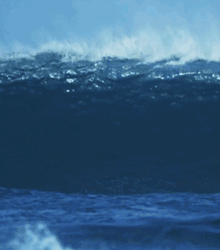
The archives repository is silent. Tucked away on the ground floor of Melbourne Museum, back of house, the Museums Victoria Archives shares a collection store with the Museums Victoria Library journal collection. We also share a wall with the Te Pasifika Gallery and when it is silent - no chatting staff or volunteers - I can hear an audio loop of crashing waves through the wall. Without this audio loop the silence is deafening. The excruciatingly load announcement over the loudspeaker, ‘the museum will close in 5 minutes’, also breaks the silence.
The theme for newCardigan’s GLAM Blog Club this month is silence.
After silence that which comes nearest to expressing the inexpressible is music - from essay The Rest is Silence in Music at Night and Other Essays, Aldous Huxley, 1931. Silence is just as powerful as music. Yin and yang, music and silence are opposite forces. When I am alone in the archives I very rarely sit in silence. I often listen to music.
Conspicuously the air conditioning is barely audible. In some collection stores the air conditioning is very loud because the temperature must remain low to preserve the collection. In the archives where the collection is predominantly paper-based, the temperature must remain under 20 degrees celsius and thus the air conditioning gets less of a work out.
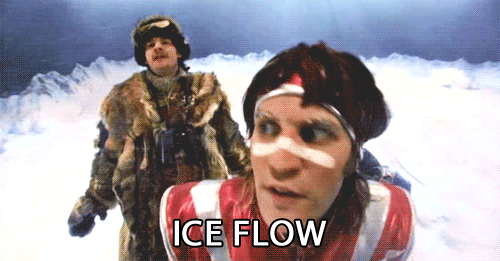
Cold vaults storing audiovisual and photographic collections under 10 degrees celsius are loud places.
So not all archives are silent, but I think it is fair to say that most archives have stories that remain silent. Thousands of voices are in the pages carefully filed away in archive boxes waiting to be given a voice.
It’s the responsibility of the archivist to ensure that the collection under their care is accessible, and to raise the profile of the archives and the valuable information housed within their collection. Archivists create finding aids to give a voice to silent records.
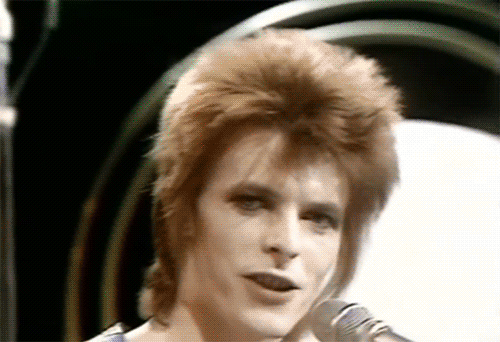
Archives often contain at least one Ziggy Stardust or vital record in their collection. The Ziggy Stardust of the archives will have a voice over and over again through generations of researchers. The unsung heroes, the voices unheard, are often just as compelling as the Ziggy Stardust’s of this world.
If nobody else sees value in these stories, the archivist who knows their collection best has an opportunity to tell stories from the archives in a variety of ways. Archive tours, blogs, seminars, research requests, finding aids, and archival description are just some of the ways.
I love when the museum is bustling with visitors - it’s function is to be enjoyed by the community, it is a sad sight to see it on low visitation days. However, the scale of the building, the endless glass and polished concrete floors are an acoustic nightmare. It is remarkable how sound travels when a kid screams in excitement or in protest. School holidays are something else entirely. I will confess the silence in the museum after hours is ecstasy. For those who don’t often have time alone, it’s akin to those stolen moments of solitude.
1 note
·
View note
Text
Who am I?
To my friends and family I am this crazy person who likes to talk a lot and often gets a bit excited about things! Don't let my crazy exterior fool you.

Nik and Danielle McGrath, birthday party, c1986 / Photographer: Sue Hilton
I've been reading through old journals, letters, looking at family photos, sketchbooks and really questioning myself about who I think I am. The point is I know who I am, I'm 36 and it's taken my first 30 years to really accept myself for who I am and embrace and love that person.
This post is for newCardigan’s GLAM Blog Club's identity theme this month, so in true archivist fashion, I have decided to classify and describe myself under the following subject headings.

Nik McGrath, Archivist, Museums Victoria, museum selfie, 2017 / Photographer: Nik McGrath
Museum Archivist
As the idea of this month’s theme is to explore identity in the GLAM world, my first subject heading is Museum Archivist. My job at Museums Victoria is to manage the permanent records documenting the history of the Museum from when it was founded in 1854 to the present day. Ensuring that the Museums Victoria Archives are accessible to the public is my foremost concern. Raising the profile of the Archives is also an important aspect of my work, so that more members of the public as well as staff at the Museum utilise the rich resources in our collection to enhance what we know about the State Collection and the history of the organisation. I have a passion for history and telling the stories of the unsung heroes whose exploits are hidden in the archives.
I have a background in photographic and audiovisual archives, including at the Duldig Studio with a photographic collection, on the Kodak Heritage Collection at Museums Victoria, the AMP Photographic Collection at the University of Melbourne Archives, and ABC Archives with the South Australian photographic collection and the Natural History Unit collection. These types of collections remain my passion, however I equally love what can be learnt about society from correspondence files and other types of archives.
I also feel strongly about being an active member of the profession and to be part of building the GLAM community in Melbourne and beyond. Creating the community and sharing knowledge is why I volunteer my time as a member of the cardi core of newCardigan, organising cardi parties, contributing my posts in GLAM Blog Clubs, and interviewing colleagues in the GLAM field for CardiCast. Another contribution I make is as the Communications Officer for the Australian Society of Archivists Victorian Branch. By editing the newsletter and contributing to the seminar series, I feel the archivist community has grown stronger in Melbourne over the past 12 months.
Many people have stereotypical views of what archivists are all about. I hope to break down these stereotypes - such as archivists are gatekeepers to knowledge - and show the broader community the importance of archives to better understand the past in order to learn and create a better future.

Suit of parade armour used by a Roman soldier during cult processions, consisting of a helmet and cuirass, both made of sewn crocodile skin, EA5473, 3rd - 4th century BC / Source: British Museum CC BY-NC-SA 4.0
GLAM Geek
I’m a shameless GLAM geek. Everywhere I go I visit galleries, libraries, archives and museums, and this reaches an epic scale when I’m travelling through a foreign country. Part of being a GLAM geek is also being a cultural heritage geek, one of my greatest ambitions is to visit as many UNESCO World Heritage Sites in my lifetime as possible. I think some would roll their eyes at this ambition, but that’s ok. This is me, and I’m totally ok with that. I’m not just interested in what UNESCO considers World Heritage, but I’m interested in all forms of heritage, as identified by different cultures.
Back to my GLAM geekery, I don’t think a day will come when visiting a GLAM place will not excite me and stimulate my mind. It’s all about lifelong learning, enthusiasm for learning new things, seeing new things and feeding my curiosity.
I have a favourite artefact, the Roman suit of parade armour made from crocodile skin discovered in a tomb in Egypt, on permanent display at the British Museum. What draws me to this artefact, a strange choice for a vegetarian (I know), is the uniqueness of the artefact, and the incredible ingenuity of the design. I’m not an admirer of the Romans who conquered cultures and destroyed societies with their greed and thirst for power. However, after visiting ancient Roman sites in Rome, Pompeii, Turkey and Greece, I do admire their design solutions.

Burntisland, Scotland, 2007 / Photographer: Nik McGrath
Heritage
I identify as an Australian with Scottish and Irish heritage. My Dad’s Mum was Scottish, she came to Australia with her parents when she was 17. She had three brothers that died in WWI, and that is why they came to Australia for a new beginning. I never met her, she died when my Dad was 19. Dad was close to his Grandmother, his Mum’s mother. He learnt how to read and write from her, before he went to school. When he went to school, the teachers and his classmates couldn’t understand him because of his strong Scottish accent. He was born in Lorne, then grew up in Seymour. On my Dad’s fathers side we have convict ancestors who came to Tasmania from Ireland. I think I have the gift of the gab from my Irish and Scottish heritage. I don’t know my Mum’s side of the family, and I feel that I must learn more about her side of the family.

Barbara McGrath, my grandmother, on the right, with a friend at the beach, most likely Lorne, c.1938 / Photographer: unknown
When I lived in London in 2007 I went to Scotland, it felt like a homecoming - I felt connected to that place. I visited Burntisland where my Grandmother was from, it’s a beautiful seaside town about 40 minutes by train from Edinburgh with old stone buildings, friendly people and views of the sea. I could see why my Grandmother lived in Lorne, I felt a personal connection to her there. Although I never knew her, I can still feel the family bond and know that part of my heritage is from the long and rebellious history of the Scots.

Porcelain Alice, burlesque artist, Dr Sketchy’s Melbourne, 2014 / Photographer: Nik McGrath
Photographer
Photography became a passion for me in high school in the darkroom. That is one of the reasons I chose to go to my high school, so that I could work in the darkroom and develop my interest in portrait photography. I hired a life model who I photographed from when I was about 16 or 17 years old. Her name was Mercedes, and I learnt a lot from working with her on a number of projects.
After I finished school, I went on to study art history, ancient history, anthropology, archaeology and gender studies. Then I went on to study design focussing on printmaking and photography. Finding the darkroom again felt like a place I belonged. For many years I was a purest, working in the darkroom with film, until one day I gave in to digital photography, thinking it might be the best way to document my travels. Digital photography has also helped me capture performance art, especially burlesque performers, giving the immediacy to see what is captured by previewing on the screen and taking far more photographs as I ever did when shooting on film.

Life drawing by Nik McGrath, c2008 / Photographer: Nik McGrath
Art
When I was 7 years old I told Dad ‘I want to be a self-employed artist’. I’m not sure how I knew about self-employed artists at that age, but I loved art and looked up to my favourite artists and somehow I knew that that is what they did for a living. I remember him saying, ‘no you don’t, maybe be an art teacher’! The prospect of me struggling to survive, relying on the sale of my art, I think that was the last thing Dad wanted for me. I knew I didn’t want to be a teacher, but that I couldn’t live without art.
Art has always been a big part of my life, since as long as I can remember. I studied graphic design at uni, thinking I could be a designer if I couldn’t live off fine art, but in the end, I realised that the design world is a harsh and brutal place, and not for me. You certainly must grow a thick skin when being criticised constantly for your designs, designs that are a projection of who you are in lines and colour on a page.
Life drawing is a regular part of my life, and has been since I was about 16. I sometimes go weekly, but try to go at least monthly. I have been going to Dr Sketchy’s - a burlesque life drawing anti-art school - for the past 10 years. I have drawn and photographed nearly all of the burlesque performers in Melbourne. Over the past year I have been going to Covert Characters life drawing, run by a fashion illustrator, the themes range from Elvis to Frida Kahlo to Tank Girl. Being part of both of these creative and inspirational art communities gives me a safe place to express my creativity with beautiful models to ignite the imagination, and to experience some of Melbourne’s avant garde performers.

Scene from Blade Runner, director Ridley Scott, 1982 / Source: Warner Bros.
Film
I’m a visual person, a photographer, so watching stories told through film really appeals to me, when the story is told beautifully through imagery, well-rounded characters, and a unique and compelling plot. My favourite genres are sci-fi and fantasy. Escaping into an imagined world, often futuristic, and forgetting the troubles of my reality, for a short time, is time well spent, in my eyes.
I recently wrote a blog about my five favourite films. It was difficult to choose just five, but it wasn’t difficult for me to select my favourite film. That is hands down Blade Runner, directed by Ridley Scott, and starring Harrison Ford, Sean Young and Rutger Hauer. My review of Blade Runner for my recent blog:
A sublime piece of filmmaking. Aesthetically beautiful, this film philosophically explores and questions what it means to be human in a gorgeous futuristic setting. Escapist films with fantastical elements and room for the imagination are often the films that draw me in most. The music and imagery are vivid. The silent moments just as important. So many beautiful moments. Rick Deckard pouring over family photos in his apartment. The material culture is important in this film, Deckard using a computer to zoom into a clue in a photograph within the reflection of a mirror. This scene appeals to my photographic archivist days, investigating to find clues about the identity of individuals, locations and times. The final scenes of the film with the most beautifully improvised line by Rutger Hauer - ‘All those moments will be lost in time, like tears in rain.’ The feeling and images from this films lingers long after the final credits.

Clip from The Cure’s Lullaby music video, director Tim Pope, 1989
Music
Just like I cannot live without art, I cannot live without music. My taste in music is eclectic, I have everything on my iTunes from The Beatles to Pink Floyd to David Bowie to Madness to The Cure to Fear Factory to Tool to Metallica to Massive Attack to Yeah Yeah Yeahs to Jeff Buckley! Music tends to become part of me once I take it in and love it. New music takes awhile for me to embrace, I tend to live amongst music that I have grown up with from a young age. I remember listening to much of the music I listen to today when I first began to really appreciate music, first as a child dancing around the house to Madness, to my teens when I discovered heavy metal and realised how much this music spoke to me, and still does today.
Something incredible happens during gigs that brings a transformative experience to music. I have seen The Cure perform twice, and each time has renewed my love for their music and the persona of Robert Smith on stage. The longevity of a band such as The Cure, speaking to generations of music lovers, gives them a special place in my heart.

Book cover, Orlando by Virginia Woolf, Penguin Books edition published 1993, first published 1928 / Source: Penguin Books
Words
I am a lover of words - reading, writing, talking, lyrics, prose, moving monologues, ad lib performance on film, final words, first words, a powerful speech, the voice of a loved one, Billy Connolly’s cheeky grin just before he tells a joke, words that hang in the air never forgotten. Words are powerful, they can both insight violence and bring about change. I eat up words.
Words are also powerful when not spoken. Silence is powerful, and body language is something I spend a lot of time reading. How words are spoken makes all the difference in the world.
I’m not a speed reader, I tend to linger on words and take my time to read sentences. For that reason, I select books I want to read carefully as they need to stand up to close scrutiny.
My favourite book that stands up to that scrutiny is Orlando by Virginia Woolf. I think I was about 16 when I read it, so it’s time for a re-reading 20 years down the track. Woolf’s imagination is boundless. Escaping into another world through the pages of Orlando in the hands of a masterful author such as Woolf, I am in total awe of her skills as a storyteller.

Nik McGrath, Tomb of Homer, Ios, Greece, 2010 / Photographer: Danielle McGrath
Travel
I always dreamt about travelling the world, experiencing different cultures, being in the same room with my favourite artworks, and learning from other people who see the world differently. To experience what I had admired in books all my life, the places and art first hand, was my greatest wish. My National Geographic collection was my treasure growing up, and to see these beautifully photographed places with words that I savoured, this was the stuff of my imagination.
Before I turned 30 I made a pact with my sister Danielle that we would explore two of the countries I had studied and loved over many years, Egypt and Greece, and before Danielle turned 30 she wished to see Morocco. The experiences I had in all three of these countries will stay with me until I am an old lady passing on my travel stories to those who might be interested. Photographs I have captured documenting my travels will aid my memory, for I must admit that at times I hardly believe myself that I was lucky enough to explore these rich countries in culture, warmth and hospitality. Upon returning from Greece and Egypt, sadly both countries reached rock bottom politically and economically, which saddens my heart. Travels and experiencing cultures with an open heart has taught me much to open my mind to all kinds of possibilities, and to have a greater understanding of different cultures and ways of seeing the world.
Visiting muslim countries such as Egypt, Morocco, Turkey and Malaysia has given me a greater understanding of women in these cultures, their strength and their voices, which was sometimes difficult to understand coming from an atheist upbringing with feminist beliefs. In Egypt I learnt from a local woman living in Cairo who was our guide that feminism is growing stronger in Cairo, and that women do have a strong voice in Egyptian culture. It’s easy to be ignorant and make judgements of other peoples cultures without basing this on anything but a very narrow world view or understanding of the world. By listening to others and travelling extensively, I have learnt a great deal about the world and myself in the process.
I have been fortunate to travel through parts of Asia, Africa, the Middle East and Europe, but I know I still have much to see and to learn.

Alfred Nicholas Memorial Gardens, Sherbrooke, Victoria, 2017 / Photographer: Nik McGrath
Nature
My Mum has always said to me that she thinks trees calm me because when she was pregnant with me she would look out at trees from our house at Boronia at the foothills of the Dandenong Ranges, and this would calm her. Some of my most peaceful memories are times when I am close to nature. Walking on the beach alone in the rain on Moreton Island when I was a teen and needed to have some peaceful time alone is a very strong memory. The sounds of nature, wind rustling in the trees, birds singing, the sunlight defused through the treetops, and the smell of trees, it’s really the only time I feel calm and at peace. I’m a city girl born and bred, I was born in Melbourne and grew up in Brisbane, to later return to my hometown when I reached 21. The holidays I had growing up often meant escaping the city to visit family in the country, and the many weekends I spent taking long walks on the beach and exploring rock pools for sea life, being close to nature shaped me, not living in an urban environment, although I find it hard to think about leaving Melbourne.
Another way I try to stay in harmony with nature, although I know I am losing this battle, is by living my life as a vegetarian. My reasons for being a vegetarian are environmental and in protest for the mistreatment of animals mass produced for human consumption. I feel like I’m contributing my part to a more sustainable future.

Nik McGrath and Lily McDonnell, Goodbye Wartime (reproducing the moment war broke out in 1939), The Boon Companions, 2015 / Photographer: Jonathan White
Friends and Family
I’m a fierce friend and come from a very large and loving family. I love my friends and family with all my heart. This is my last subject heading, I think it describes me well, as I have left the best to last. None of my other loves and passions would mean anything without my beautiful friends and family. The photograph of me as a little girl at the top of this blog with my little sister Danielle, who is one of my greatest loves, knows me better than anyone else as she has known me all her life, and most of mine. We are extremely close and share an unbreakable bond. Lily, with me in the photograph above, is my best friend and someone I also share an unbreakable bond. Lily and I met in 2004 studying design at Monash University. We’ve been through a lot together, with time and life experience, we have both grown wiser and challenged ourselves personally and professionally to be the best we can be. These two women are extremely important to me as we share our lives and grow old together. I am fortunate to have many close friends, who I will not name here, you know who you are, whose love and support I value above all else.
This blog goes someway to describe who I am, or at least who I think I am. Perhaps others have a different impression of who I am, as I know that not everyone sees me completely, but might only know one aspect of me. I know I can be secretive, and it takes a long time to get to know all the layers that make up who I am as a person. The work version of me overlaps with the personal me, but one thing is for sure, only a few people really know who I am.
#glamblogclub#AusGLAMBlog#archivist#museum archivist#identity#GLAM#photographer#art#film#Blade Runner#British Museum#music#The Cure#travel#books#conversation#writing#friends#family#cultural heritage#heritage
1 note
·
View note
Text
Horror Hamlet
Hamlet is my favourite Shakespeare play, which has been the case since high school. I’ve seen many interpretations of Hamlet over the years. I remember seeing Heavy Metal Hamlet in the Botanic Gardens in Brisbane when I was still at school, which left a lasting impression. I saw Kenneth Branagh’s 1996 version of Hamlet in the cinema, which no doubt has influenced my interpretation.
I've been going through some old boxes, and found some journals from school, hence my nostalgic mood.
Do you have a favourite teacher from your school years that you still think about fondly? Well, my favourite teacher was Ms Poulsen. She had purple hair, loved Joy Division and let us stencil poetry on the classroom wall. She was very encouraging, passionate and an inspirational teacher. I still have the letter she wrote to me at the end of grade 12, and the bookmark she picked for me personally. She really cared about her students.
Ms Poulsen set us a task in grade 12 English to interpret Hamlet and write in our journal the ideas outlining our film version of Hamlet as director of the production.
In August 1998, when I was 17, I wrote my Director’s Address, which I’ve had a kick out of reading today, and I thought others might too.
‘The vision of Hamlet that I intend to direct is an R18+ horror film. Hamlet is a particularly violent play so far as the emotions of some of the characters express.
I wish to bring this out with sound and special effects. For example, the scene in which Polonius is slain by Hamlet, Hamlet could cut Polonius’ head off so that blood splatters on the walls and his head rolls off, and in his last breath of life the head attempts to bite Hamlet’s leg. His jaws clamp on tight and are difficult for Hamlet to remove [I was a bit obsessed with Jaws]. Gertrude may be hysterically screaming for what she has witnessed, and horror that Hamlet would turn on her next.
Words spoken to Claudius by Hamlet could be ones of complete verbal abuse - swearing, intimidation and veins popping in the neck. Hamlet could be a chain smoker displaying the stereotypical belief that people smoke in order to calm their nerves.
When Ophelia drowns it may be a struggle to survive with ranting and raving.
The final scene in which people are poisoned could induce projectile vomiting and blood spurting out of the mouth and ears. Violent palpitations could follow death. The room in which Gertrude, Laertes, Claudius and Hamlet are poisoned would be covered in vomit and blood.
The cast of my film version of Hamlet, if I had a choice and availability of any actor/actress I wish, would be the following: Hamlet - Gary Oldman; Ophelia - Jennifer Ehle; Claudius - Warren Clarke; Gertrude - Emma Thompson; Polonius - John Malkovich; Laertes - Rowan Atkinson (snobbish); Fortinbras - Robert Carlyle; Horatio - John Hannah, Rosencrantz - Rik Mayall; Guildenstern - Adrian Edmondson; and Ghost - Alan Rickman (evil voice).
My interpretation of the play Hamlet is that is is a play of death, the pursuit of death and violence which accompanies death. That is why I have chosen, as director, to make a horror film out of the play. I will be exaggerating the violence which exists so that a horror film will be developed.
My interpretation of the motivations of the characters is as follows: Hamlet is motivated by the thought of murdering his uncle; Ophelia is motivated by the love she feels for her family and Hamlet; Claudius is motivated by money, power and Gertrude; Gertrude is motivated by her duty as mother to Hamlet and Queen of Denmark; Polonius is motivated by gaining power and trust in the royal family of Denmark; Laertes is motivated firstly, by returning to France and secondly, by avenging his father’s murder; Fortinbras is motivated by gaining the territory his father lost and by physical violence (pursues war); Horatio is motivated by protecting his best friend Hamlet; R & G are motivated by sucking up to the royal family possibly in hope for gaining an important position; and the Ghost is motivated by ensuring that Hamlet kills Claudius.
My vision for the production of Hamlet in terms of costumes and set is that the costumes be for Hamlet dark and flamboyant. I think I desire something similar to that of Dracula in Bram Stoker’s Dracula (directed by Francis Ford Coppola), of that period.
Dracula was published in 1897, so I imagine the period which will inspire the costumes for my production of Hamlet will be 19th century.
I thought Winona Ryder was beautiful in Bram Stoker’s Dracula, however I wish to cast Jennifer Ehle starring alongside Gary Oldman as Ophelia. The costumes of Mina in Dracula will be idea for Ophelia with Ehle’s face.
Ehle recently acted in Wilde - Bram Stoker and Oscar Wilde were friends!
The castle at Elsinore shall me Gothic in architecture, dark and overwhelming. The rest of the characters will be dressed in 19th century costumes with red as the underlying colour. The Gothic castle I have in mind is of the 12th - 13th century in stone.
To make Hamlet a horror film, certain areas in the plot must be emphasised. The appearance of the Ghost in the opening scene must be absolutely terrifying. Bernardo, Francisco, Marcellus and Horatio must behave as though they truly believe that the Ghost is going to kill them in the most gruesome manner. To make this possible, Alan Rickman’s voice must be at its deadliest and face at his scariest. The special effects must create a feeling of hell fire when the audience views the Ghost for the first time. Devil creatures and demons will surround the Ghost as he has just come from hell itself. A transparent image of Hamlet’s fathers head with dry blood at the ears (where the poison was poured) would be rather shocking. The Ghost must be forceful and threatening on the point that his murder must be avenged.
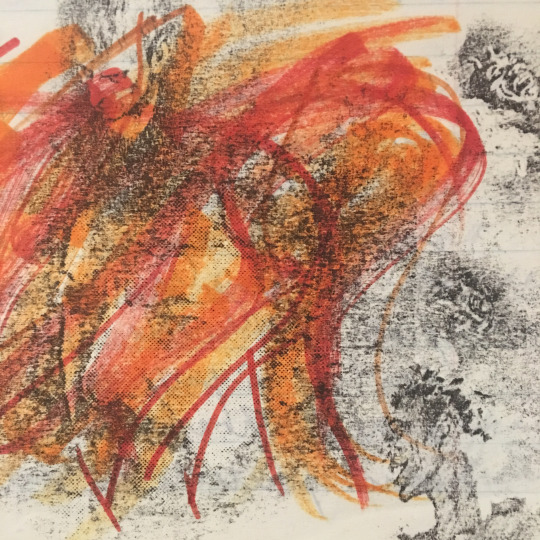
This is the image of hell I portrayed in my journal, with a rubbing of Alan Rickman’s face at the centre and Norman Lindsay’s hellish creatures and Norman Lindsay’s self portrait at the top left
In Act II Scene IV when Hamlet meets the Ghost of his father he must be amazed at the transformation of a person he once knew into some kind of monster [I too was surprised when Metallica released their song of the same name in 2003]. This idea and the entrance of the evil spirit into Hamlet’s soul encourages him to do all that he can to rid the world of his uncle. However, struggle ensues within Hamlet as to how far he shall go for his father’s spirit without acting completely immorally which is against his nature. The Ghost consumes him during acts of violence, such as, in Act III Scene IV when Polonius is slain.
In Act IV Scene V when Ophelia goes mad she must behave out-of-control. The nature of her madness turns to extreme violence to anyone who comes close to her. She bangs her head against the floor and walls and she leaves howling in pain. Her death in drowning is one of thrashing and violence. Screams which penetrate the soul and thanks to the grand sound effects make the audience disbelieve that Ophelia is the same person. Blood spurts from her wounds due to the intensity of her screams and thrashing about.
Act V Scene II the last scene of the play is filled with horror to the climax of the play. The poisoning of Gertrude, Laertes, Claudius and Hamlet involves projectile vomiting and blood spurting out of the mouth and ears. Possibly due to the ingredients of the poison. Violent palpitations follow death.
The camera techniques must involve crystal clear images and many close-up shots of Hamlet’s face so that expressions are important. Swift movement in times of murder and violence will build the effect.
The problem in doing this is justifying the amount of violence. For an audience in 1998 to make Hamlet original and intriguing for this audience, to believe a horror film would be an excellent way to do this, and attract a younger audience who may not wish to be bored by lengthy 4 hour versions which have previously been put out! This does not mean that I do not admire and enjoy the Kenneth Branagh version.’
If you’ve read to this point, thank you for going on this journey down memory lane with me. This month I’m thinking about identity for GLAM Blog Club, and looking into my past is part of my efforts to prepare for writing a blog about myself and who I am.
12 notes
·
View notes